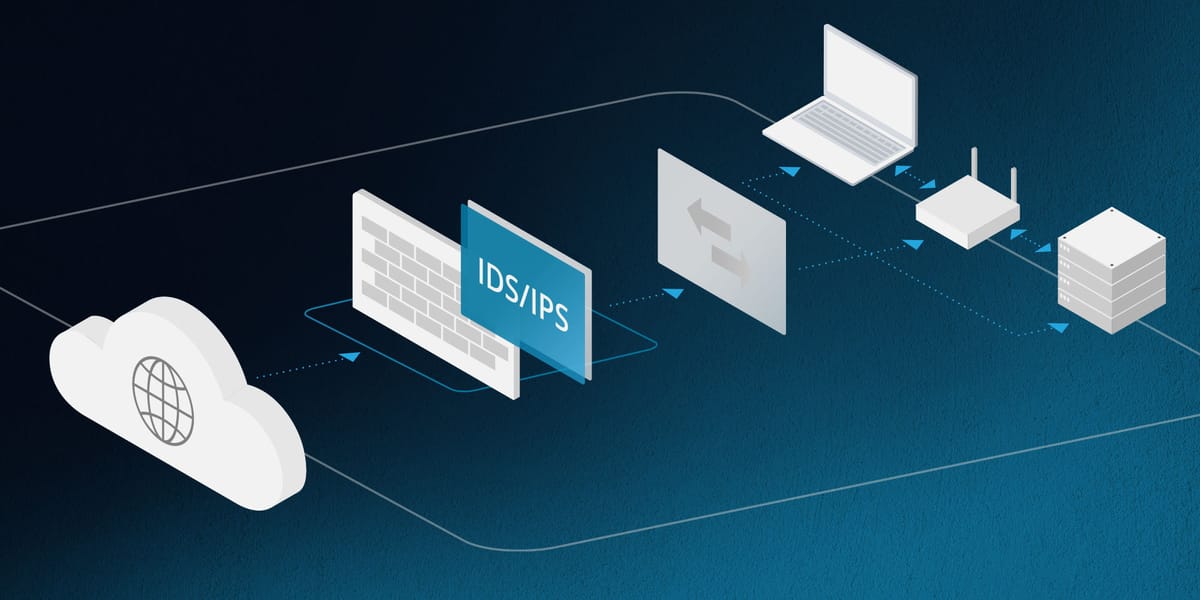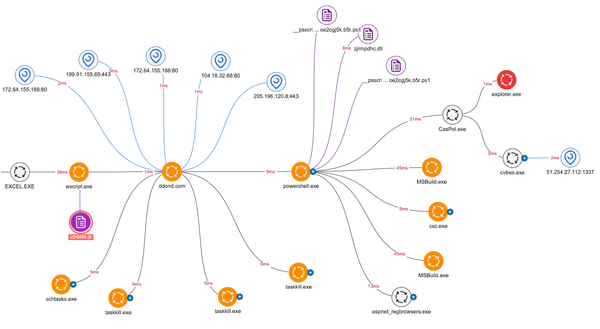Advanced Intrusion Detection and Prevention: Enterprise-Grade Strategies for Modern Security Operations

In today's complex threat landscape, organizations face increasingly sophisticated attacks designed to evade traditional security controls. Intrusion Detection Systems (IDS) and Intrusion Prevention Systems (IPS) have evolved from simple signature-based tools to sophisticated, multi-layered defense mechanisms that form a critical component of modern security architecture. This comprehensive guide explores advanced techniques for implementing, tuning, and maintaining effective intrusion detection and prevention capabilities within enterprise environments.
Understanding the Modern Intrusion Landscape
The threat landscape has shifted dramatically in recent years, with adversaries employing advanced evasion techniques, fileless malware, and sophisticated social engineering to bypass traditional security controls. According to recent industry reports, the average time to detect a breach still hovers around 200 days, highlighting the critical need for robust detection mechanisms.
Modern intrusions typically follow a predictable pattern known as the cyber kill chain:
- Reconnaissance: Attackers gather information about the target
- Weaponization: Malicious payloads are developed
- Delivery: Attack vectors are deployed
- Exploitation: Vulnerabilities are exploited
- Installation: Persistent access is established
- Command & Control (C2): Remote control is maintained
- Actions on Objectives: The attacker's goals are achieved
Effective intrusion detection and prevention systems must address each stage of this chain, providing visibility and protection across the entire attack lifecycle.
IDS vs. IPS: Key Differences and Complementary Functions
While often mentioned together, IDS and IPS serve distinct but complementary roles in a security architecture:
Intrusion Detection Systems (IDS)
An IDS monitors network traffic and system activities for suspicious patterns and generates alerts when potential intrusions are detected. Key characteristics include:
- Passive monitoring: Does not interfere with traffic flow
- Detection focus: Primary function is identification and alerting
- Post-event analysis: Enables forensic investigation of security incidents
- Lower false positive impact: Alerts do not disrupt business operations
Intrusion Prevention Systems (IPS)
An IPS takes detection a step further by actively blocking or preventing detected intrusions. Key characteristics include:
- Active protection: Interferes with traffic to prevent attacks
- Prevention focus: Primary function is blocking malicious activity
- Real-time mitigation: Stops attacks as they occur
- Higher false positive impact: Improper configuration can disrupt legitimate traffic
Modern solutions often combine both IDS and IPS functionality in a single platform, allowing organizations to implement detection or prevention modes based on their risk tolerance and operational requirements.
Types of Intrusion Detection and Prevention Systems
Several distinct approaches to intrusion detection and prevention have emerged, each with unique strengths and use cases:
Network-Based IDS/IPS (NIDS/NIPS)
Network-based systems monitor traffic on network segments or at strategic chokepoints. They examine packet headers and payloads to identify suspicious patterns or anomalies.
Key capabilities:
- Traffic analysis: Deep packet inspection to identify malicious content
- Protocol analysis: Detection of protocol violations or abnormal behaviors
- Flow monitoring: Identification of unusual traffic patterns
- Signature matching: Detection of known attack patterns
Modern NIDS/NIPS implementations like Suricata and Snort can process traffic at multi-gigabit speeds, providing protection without becoming network bottlenecks. According to SANS Institute research, properly configured NIDS implementations can detect up to 85% of network-based attacks when combined with threat intelligence feeds.
Host-Based IDS/IPS (HIDS/HIPS)
Host-based systems monitor activities on individual endpoints, providing detailed visibility into system events, file changes, and process behaviors.
Key capabilities:
- File integrity monitoring: Detection of unauthorized file modifications
- Registry monitoring: Identification of suspicious registry changes
- Process behavior analysis: Detection of anomalous process activities
- Log analysis: Correlation of system and application logs
Popular HIDS solutions include Wazuh, OSSEC, and commercial endpoint detection and response (EDR) platforms. The MITRE ATT&CK framework provides an excellent reference for mapping HIDS coverage to common attack techniques.
Application IDS/IPS
Application-focused systems monitor specific applications, particularly web applications, for signs of attack or compromise.
Key capabilities:
- Request analysis: Inspection of application requests for malicious inputs
- Response monitoring: Detection of unusual application responses
- Session tracking: Identification of session anomalies
- Input validation: Blocking of malicious inputs before processing
Web Application Firewalls (WAFs) represent the most common form of application IPS, protecting web applications from attacks like SQL injection, cross-site scripting, and other OWASP Top 10 vulnerabilities. According to the Verizon Data Breach Investigations Report, web application attacks remain among the most common attack vectors for data breaches.
Network Behavior Analysis (NBA)
NBA systems focus on identifying anomalies in network traffic patterns rather than looking for specific attack signatures.
Key capabilities:
- Baseline establishment: Learning normal network behavior patterns
- Anomaly detection: Identification of deviations from established baselines
- Traffic profiling: Classification of traffic by type, source, and destination
- Statistical analysis: Application of algorithms to detect outliers
NBA approaches are particularly effective at detecting novel threats, zero-day exploits, and advanced persistent threats (APTs) that might evade signature-based detection. The NSA's Network Analysis guidance provides valuable insights into implementing effective network behavioral analysis.
Detection Methodologies: Beyond Simple Signatures
Modern intrusion detection and prevention systems employ multiple detection methodologies to maximize effectiveness:
Signature-Based Detection
Signature-based detection remains a fundamental approach, using known patterns of malicious activity to identify attacks.
Implementation considerations:
- Signature quality: Ensure signatures are specific enough to minimize false positives
- Update frequency: Maintain current signature databases
- Custom signatures: Develop organization-specific signatures for unique threats
- Performance impact: Monitor the performance implications of large signature sets
While signature-based detection is effective against known threats, it struggles with zero-day exploits and highly targeted attacks. NIST's Guide to Intrusion Detection and Prevention Systems provides detailed guidance on implementing and managing signature-based detection.
Anomaly-Based Detection
Anomaly detection establishes baselines of normal behavior and flags deviations from these baselines as potential intrusions.
Implementation considerations:
- Learning period: Allow sufficient time for establishing accurate baselines
- Environmental changes: Update baselines following significant infrastructure changes
- Seasonality: Account for normal variations in traffic patterns
- Threshold tuning: Adjust sensitivity to balance detection with false positives
Anomaly detection excels at identifying novel threats but requires careful tuning to minimize false alarms. The research paper "A Survey of Network Anomaly Detection Techniques" provides an in-depth examination of different anomaly detection approaches.
Heuristic Analysis
Heuristic analysis uses rules and algorithms to identify suspicious behaviors that may indicate an attack, even if the specific attack pattern is unknown.
Implementation considerations:
- Rule development: Create rules based on known attack methodologies
- Behavioral indicators: Focus on suspicious behaviors rather than specific signatures
- Context awareness: Consider the context of activities when evaluating potential threats
- Machine learning integration: Leverage ML algorithms to improve detection accuracy
Heuristic approaches bridge the gap between signature and anomaly-based detection, offering improved detection of novel threats while maintaining reasonable false positive rates.
Implementing Effective IDS/IPS in Enterprise Environments
Successful deployment of intrusion detection and prevention systems requires careful planning and ongoing management:
Architecture and Placement
The strategic placement of sensors is critical for comprehensive visibility and effective protection.
Network IDS/IPS placement considerations:
- Network ingress/egress points: Monitor traffic entering and leaving the organization
- Internal network boundaries: Deploy at boundaries between security zones
- Critical subnet monitoring: Provide additional coverage for sensitive network segments
- Span port vs. inline deployment: Balance visibility with performance and redundancy requirements
According to Cisco's Security Architecture best practices, organizations should implement a defense-in-depth approach with multiple detection points throughout the network architecture.
Performance Optimization
IDS/IPS systems must be optimized to handle the volume and velocity of traffic in modern networks.
Performance considerations:
- Hardware sizing: Ensure hardware resources match traffic volumes
- Rule optimization: Streamline rule sets to minimize processing overhead
- Traffic filtering: Focus analysis on relevant traffic
- Load balancing: Distribute traffic across multiple sensors when necessary
For large-scale deployments, consider implementing a distributed architecture with centralized management, as outlined in Palo Alto Networks' Security Architecture Guidance.
Tuning and False Positive Reduction
Effective tuning is essential for balancing detection sensitivity with operational impact.
Tuning methodology:
- Baseline establishment: Deploy initially in monitoring mode to understand normal traffic patterns
- Incremental implementation: Gradually enable detection capabilities, starting with high-confidence rules
- Exception development: Create exceptions for legitimate traffic that generates false positives
- Regular review: Continuously analyze alerts to identify tuning opportunities
Organizations implementing IDS/IPS should follow the SANS Institute's IDS Tuning checklist to systematically reduce false positives while maintaining detection effectiveness.
Advanced IDS/IPS Strategies
Beyond basic implementation, several advanced strategies can enhance the effectiveness of intrusion detection and prevention systems:
Threat Intelligence Integration
Integrating threat intelligence with IDS/IPS significantly improves detection capabilities for emerging threats.
Implementation approaches:
- Automated feed integration: Incorporate commercial or open-source threat feeds
- Indicator processing: Convert intelligence into actionable detection rules
- Contextual enrichment: Add context to alerts based on threat intelligence
- Retrospective analysis: Search historical data for previously undetected threats
The MITRE Cyber Threat Intelligence repository provides valuable resources for organizations looking to enhance their detection capabilities with structured threat intelligence.
Security Information and Event Management (SIEM) Integration
Integrating IDS/IPS with SIEM systems enables correlation across multiple data sources, reducing false positives and providing contextual information for investigation.
Integration benefits:
- Cross-source correlation: Correlate IDS/IPS alerts with other security data
- Alert prioritization: Use additional context to prioritize alerts
- Automated response: Trigger automated workflows based on correlated events
- Unified investigation: Streamline investigation through a single interface
Machine Learning and AI Integration
Machine learning and artificial intelligence can significantly enhance traditional detection methodologies.
Key applications:
- Anomaly detection: Identify unusual patterns that might indicate attacks
- Alert prioritization: Automatically prioritize alerts based on risk
- False positive reduction: Filter out benign anomalies
- Behavioral analytics: Detect subtle changes in user or entity behavior
Research from Gartner indicates that by 2025, over 50% of enterprise IDS/IPS deployments will incorporate machine learning capabilities to improve detection accuracy.
Securing Cloud and Hybrid Environments
Modern enterprise environments often span on-premises and cloud infrastructure, requiring specialized approaches to intrusion detection and prevention.
Cloud-Native IDS/IPS
Major cloud providers offer native IDS/IPS capabilities that should be integrated into a comprehensive security strategy.
Cloud IDS/IPS considerations:
- Shared responsibility model: Understand the division of security responsibilities
- API-based monitoring: Implement API monitoring for cloud services
- Virtual appliance deployment: Consider virtual IDS/IPS appliances for cloud workloads
- Cloud-specific threats: Develop detection rules for cloud-specific attack vectors
Organizations should review AWS's Security Blog and similar resources for cloud-specific security guidance and best practices.
Container and Microservices Protection
Modern application architectures require specialized detection and prevention approaches.
Container security considerations:
- Image scanning: Detect vulnerabilities and malware in container images
- Runtime monitoring: Identify suspicious container behaviors during execution
- Network segmentation: Implement micro-segmentation between containers
- Orchestration security: Secure container orchestration platforms like Kubernetes
For detailed guidance on securing containerized environments, refer to the NIST Application Container Security Guide.
Measuring and Improving IDS/IPS Effectiveness
Regular assessment and continuous improvement are essential for maintaining effective intrusion detection and prevention capabilities.
Key Performance Indicators (KPIs)
Establish metrics to evaluate and improve IDS/IPS effectiveness:
- Detection rate: Percentage of actual intrusions detected
- False positive rate: Number of false alarms generated
- Mean time to detect (MTTD): Average time to detect genuine intrusions
- Coverage: Percentage of attack surface monitored by IDS/IPS
- Actionable alert percentage: Proportion of alerts that lead to security actions
Regular Testing and Validation
Validate IDS/IPS effectiveness through regular testing:
- Penetration testing: Conduct regular penetration tests to validate detection capabilities
- Red team exercises: Use red team exercises to test detection of sophisticated attacks
- Attack simulations: Simulate common attack patterns to validate detection rules
- Tabletop exercises: Test incident response processes for detected intrusions
For a structured approach to security testing, consult the OWASP Testing Guide and adapt its methodologies to your environment.
Building an Incident Response Process Around IDS/IPS
Effective incident response processes must be built around intrusion detection and prevention systems:
Alert Triage and Investigation
Develop a structured approach to alert handling:
- Initial triage: Quickly assess alert severity and validity
- Context gathering: Collect additional information about the detected activity
- Investigation: Analyze the activity to determine if it represents a genuine threat
- Escalation: Route confirmed incidents to appropriate response teams
Response Automation
Implement automated responses for common scenarios:
- Blocking: Automatically block malicious IP addresses or domains
- Isolation: Isolate compromised systems from the network
- Evidence collection: Automatically gather forensic data for investigation
- Notification: Alert relevant stakeholders based on incident type
Continuous Improvement
Use lessons learned from incidents to improve detection capabilities:
- Post-incident analysis: Identify detection gaps and improvement opportunities
- Rule updates: Create new detection rules based on observed attack patterns
- Process refinement: Refine response procedures based on operational experience
- Knowledge sharing: Share threat intelligence derived from incidents
Conclusion
Effective intrusion detection and prevention require a multi-layered approach that combines technology, processes, and people. By implementing the strategies outlined in this article, organizations can significantly improve their ability to detect and prevent intrusions before they result in major security incidents.
Remember that IDS/IPS deployment is not a one-time project but an ongoing program that requires continuous tuning, updating, and improvement to remain effective against evolving threats. Regular assessment, testing, and refinement of detection capabilities are essential for maintaining a strong security posture.
For organizations looking to enhance their intrusion detection and prevention capabilities, start by assessing your current coverage against common attack vectors, identifying gaps, and developing a phased implementation plan that balances security improvements with operational considerations.




